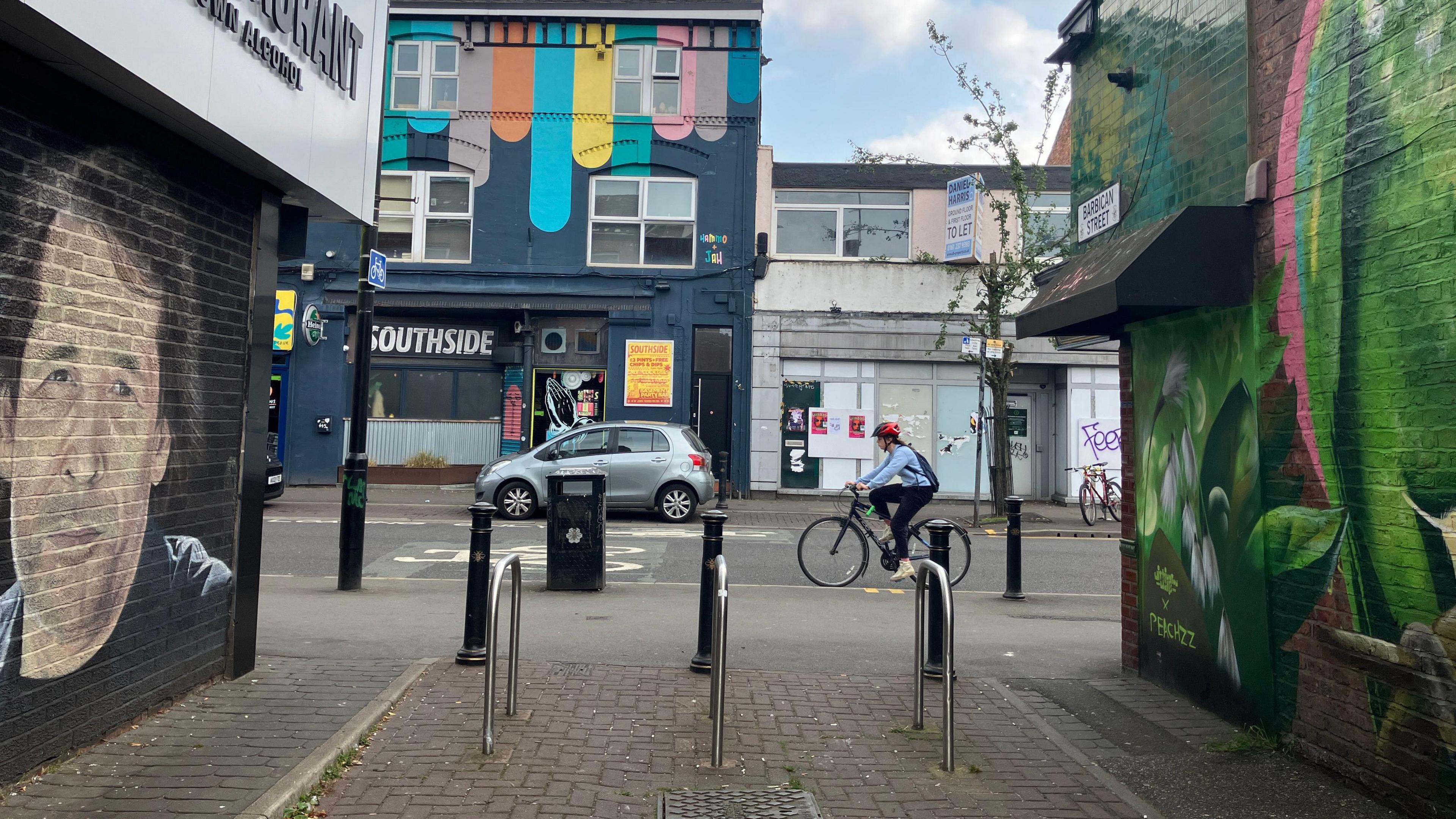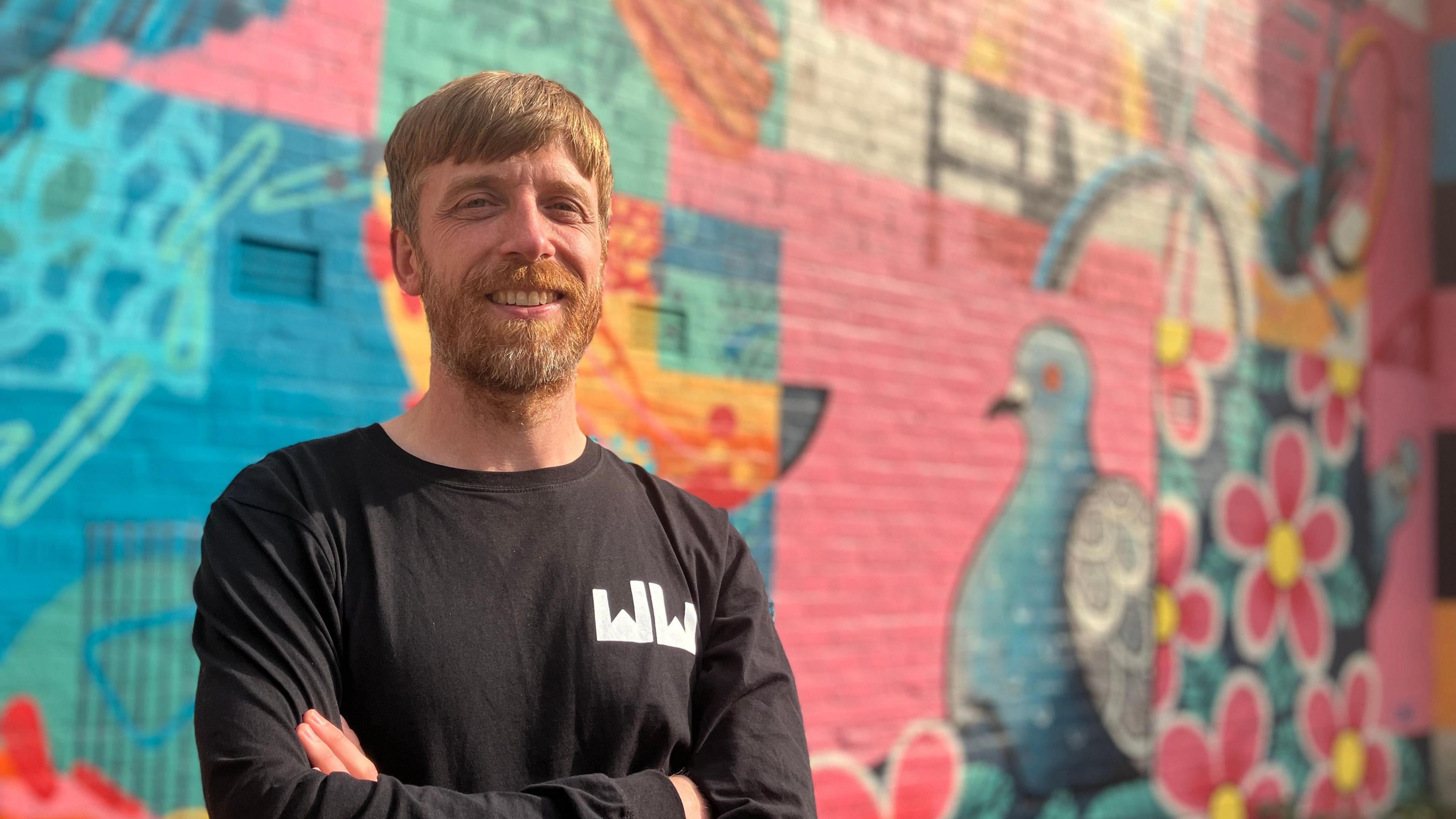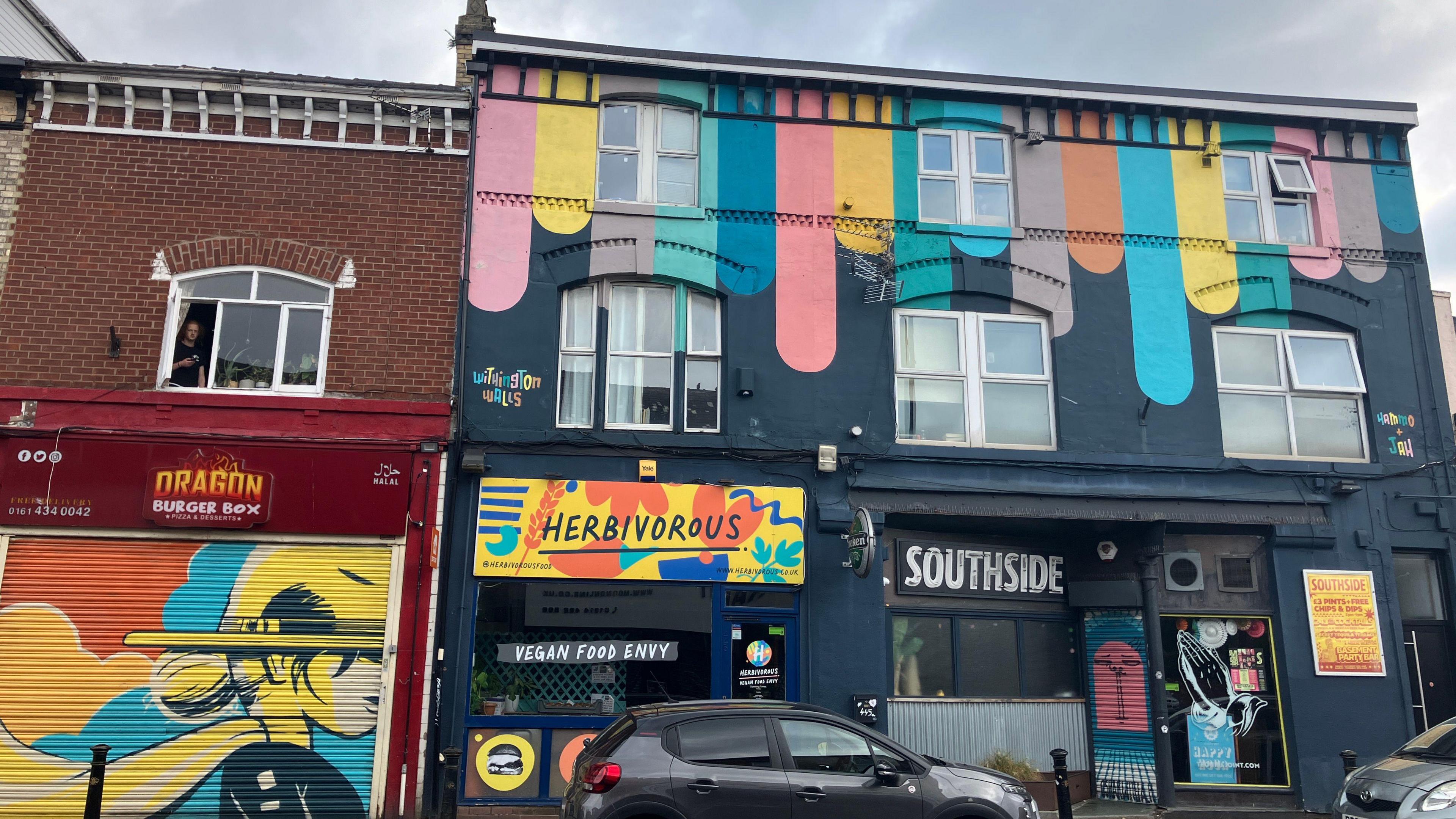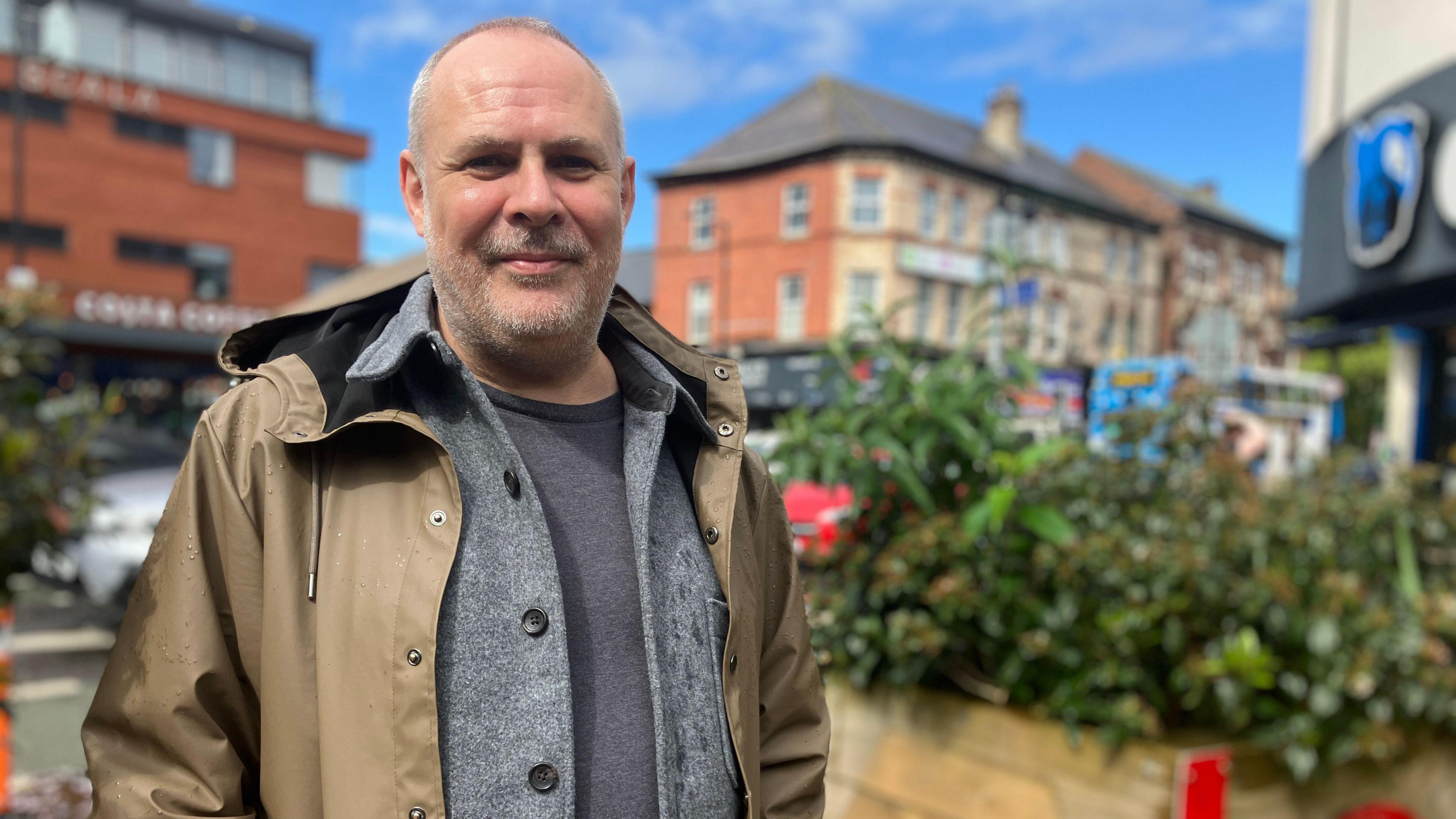High street's revival inspires European cities

Withington's revival has been used to influence policy in European cities
- Published
The way a Manchester shopping district has turned its fortunes around is inspiring other high street revivals across the UK and Europe.
Withington in south Manchester has become an area with "a sense of identity" and is now filled with independent stores, volunteers involved in the project said.
They added that creating more public art and pushing back opening times of shops to capitalise on the number of people around later in the evening had had a big impact.
The renaissance has been backed by the government's High Streets Task Force, which aims to help town centres in decline.

Ed Wellard said Withington's 'beautiful' public art set it a part from other centres
The regeneration of the high street has been built on the work of the community art project Withington Walls, a group of volunteers led by mural artist Ed Wellard that receives no government funding.
They began painting walls, shutters and phone cabinets during the coronavirus lockdown in the hope of brightening up the town and changing the way people saw it.
There are now more than 100 pieces of public art linked to the area through either the painter or the artwork’s subject.
“There’s a sense of identity here," Mr Wellard said.
"If you come through on a bus and you see loads of amazing artwork it’s going to get your attention and you might stop off and visit the restaurants, bars or clothes shops”.

The mural's of local artists have been credited with inspiring Withington's revival
The High Street Task Force began working with Withington businesses, the community and the local council after the government pledged funding to transform town centre.
A team from Manchester Metropolitan University led by Prof Steve Millington is running the scheme on behalf of the government.
"There are 25 top priorities that we think will have the most impact, including improving the appearance of shops, the right range of retailers and good customer service", Prof Millington said.
"But number one is whether the shops open when people want to use them?
"There might be a logic to opening at ten instead of nine, and closing at six."
He said in Withington there had been "lots of activity after 6pm" but people had "found nothing open.”

Prof Steve Millington is part of a taskforce that drove changes in Withington
The low-cost changes his team suggested have helped to improve the appearance of Withington high street and made it busier.
The government task force is now using the Withington example in efforts to reverse the fortunes of 150 town centres across the UK.
European universities are also using it to mastermind high street policies for areas in cities such as Amsterdam and Athens, and in cities in Croatia and Lithuania.
Peter Doherty, who owns the Coffee House Café, where a mural of Manchester United striker Marcus Rashford, was painted on the side wall a 2020, said: "It has made a difference for me.
"People who go to watch United play come to have a look at this artwork and that it brings business to the area. And that’s because of Withington Walls."
Listen to the best of BBC Radio Manchester on Sounds and follow BBC Manchester on Facebook, external, X, external, and Instagram, external. You can also send story ideas to northwest.newsonline@bbc.co.uk, externaland via Whatsapp to 0808 100 2230.
Related topics
- Published10 November 2020
